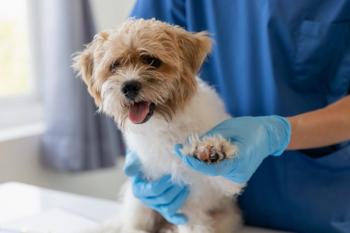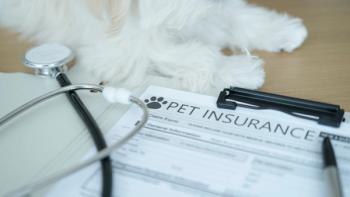
Headed in the right DIR-ection
The bad news? Veterinary debt-to-income levels are on a fast track to disaster. The good news? Our professionwide DIR might improve with these strategies.
Whether they acknowledge it or not, veterinarians do have control, in whole or in part, of every component of the veterinary markets. Veterinarians control the college application process, veterinary education and the practices that provide services to animal owners.
While veterinarians have little direct control over the amount of public funding provided for veterinary education, they do have control over how to best use those funds to develop veterinarians who are prepared to provide the services animal owners demand at prices they are willing to pay. The veterinary profession can essentially affect the performance of the veterinary markets.
The interaction of short- and longer-term trends in the veterinary market (things like rates of unemployment, income growth and job applicant-to-job ratios in the short term and the decline in veterinary school applicants, increased veterinary school class sizes and sensitivity of incomes to the business cycle in the long term) can be measured by debt-to-income ratio (DIR). DIR is one of the most important key performance indicators the profession can look to to determine its health and viability.
At its most basic level, DIR is computed by dividing an individual's reported debt by his or her reported income. However, aggregating these individuals in order to present a fair, representative DIR that accurately reflects the economic performance of the profession requires a more exacting procedure.
The ties that bind
The DIR ties the market for education and the market for veterinarians together. The debt is directly related to the costs incurred to earn a DVM degree, while the income is the payoff a veterinarian receives upon completion of the DVM program. Thus, the DIR provides an initial measure for what animal owners are willing to pay for veterinary services in relation to what it costs veterinarians to provide those services.
The current DIR is at 2:1 for graduates of U.S. colleges of veterinary medicine. This has grown over the last 15 years from its 2001 level of less than 1.2:1. However, this mean obscures the fact that the debt-to-income ratio is over 10:1 for some U.S. students. Currently the short-term performance of the veterinary markets has enabled the DIR to hold at near 2:1. But the longer-term trends and the increasing probability of an economic downturn suggest that the persistent increase in the DIR may continue into the future. This is not good news.
What's the goal?
Total debt for the 2015 graduates from U.S. veterinary colleges was estimated at $427,502,116. Total estimated cost (which includes tuition, fees and living expenses) was $623,183,030 for all of the 3,018 U.S. veterinary college graduates in 2015. The interest expense for borrowing these funds would have been an additional $81,924,168, bringing the total cost of the education to $705,107,198. However, students applied various outside funds to pay for some or all of these expenses, thus total debt was only 61 percent of total cost.
A partnership among the public, the colleges of veterinary medicine, veterinary students and veterinary employers could help the profession achieve four major goals:
1. Eliminate the excessive debt of students through better management of expenditures. This would create a savings of $9,181,368 and a reduction to 1.95 in the debt-to-income ratio.
2. Eliminate the interest on student loans while the student is in school. This would create a savings of $22,020,185 and a reduction to 1.89 in the debt-to-income ratio.
3. Reduce students' education outlays by 10 percent. This would create a savings of $39,630,056 and a reduction to 1.79 in the debt-to-income ratio.
4. Increase starting salaries by 10 percent. This would create increased revenue of $21,482,518.38 and a reduction to 1.81 in the debt-to-income ratio.
The combination of these goals would lower the mean debt-to-income ratio from 2:1 to 1.38:1.
Crafting viable strategies
The first overarching strategy is to gain a professionwide referendum on the debt-to-income ratio so that every veterinary professional understands that he or she owns this problem. This is not just a public tax/revenue problem; a problem of veterinary colleges having too high of costs, too many seats or too many non-discounted seats; or veterinary practices leaving too much demand unrealized. The high DIR is a problem for the profession, and this key performance indicator should be considered by every veterinarian in every business and professional decision.
The American Veterinary Medical Association (AVMA) has come up with a set of strategies that can be used to accomplish each of the goals based on economic factors that affect supply and demand in each veterinary market. This is not an exhaustive list, but it does provide a first draft of the types of strategies that will be required to improve the long-term performance of the markets.
Strategies for the general public
> Eliminate the interest payment on student loans while in school.
> Reduce the interest rate to be more in line with the risk of the loan.
Strategies for veterinary college applicants and students
> Reduce the hours of potential veterinary applicants' unpaid experience.
> Increase awareness of the cost of veterinary education and the implications on postgraduate living standards.
> Reduce cost-of-living expenses for veterinary students.
Strategies for veterinary colleges
> Increase scholarships for veterinary students.
> Institutionalize a connection between the education and veterinary markets.
> Conduct research to develop the same or better quality medical treatments at lower cost.
> Develop pilot projects to measure the economic implications of new teaching models.
> Explore the differences between schools that have highest and lowest internship rates.
> Require financial education for faculty to improve awareness of the economics of practice.
> Seek economies of size, specialization of schools or both.
> Improve veterinary graduates' readiness and confidence.
Public and private practice strategies
> Increase the financial literacy of veterinary practice owners.
> Enhance the demand for veterinarians.
> Increase the value of graduates.
The most important takeaway here? That the persistently increasing DIR is unsustainable. At some point the rising DIR will induce a market correction that will produce results highly unfavorable to many veterinarians. A more favorable outcome may be obtainable if strategies to reduce the DIR are implemented immediately.
We provide greater detail on this topic in the 2016 AVMA Report on the Market for Education. A
Dr. Michael Dicks is director of the AVMA's Veterinary Economics Division.
Newsletter
From exam room tips to practice management insights, get trusted veterinary news delivered straight to your inbox—subscribe to dvm360.






